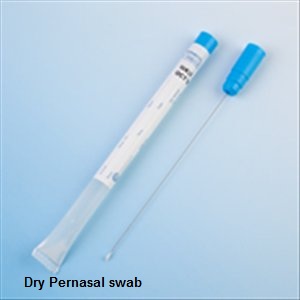Suitable Specimen Types
- Sputum
- BAL
- Trap
- NPA
- BAL
- Trap
- Throat Swab
Turnaround Time
3 daysSample Stability
Samples are stable at room temperature (refrigeration may improve sensitivity)Bordetella pertussis Real Time PCR Detection
General Information
Bordetella pertussis is the bacterium responsible for the respiratory infection whooping cough or pertussis. The disease usually affects infants and infection may be severe. Despite an effective vaccine, immunity can wane, and susceptible older children or adults can pass on the infection to infants.
Traditionally, laboratory-confirmation of B. pertussis infection has been by isolation of B. pertussis by culture; however, PCR is a more rapid and sensitive method. The laboratory ceased to offer Bordetella pertussis culture for suspected whooping cough on 1st Jan 2016 and now recommends PCR. In adults with symptoms >2weeks, serological testing is also available.
Please contact Duty Microbiologist 0121 424 3244 for queries.
If sending a pernasal swab, please send the swab in the dry tube and not the charcoal gel containing tube.
Patient Preparation
For general aspects of taking respiratory samples we recommend that users follow either their local protocols or “The Royal Marsden Manual of Clinical Nursing Procedures”.
Sputum
- Ask patient to take three deep breaths in through their nose, exhale through pursed lips and then force a deep cough. Ask patient to expectorate into a 20ml white top sterile sample container.
Bronchoalveolar Lavage (BAL)
- BAL should be collected according to local protocols using sterile fluids as the instillate. Recovered lavage fluid should be aseptically transferred to a 20ml white top sterile sample container
Pernasal swab
- Pernasal swabs can be ordered from Pathology Stores in the usual way.
- Remove cap from media tube by twisting.
- Gently insert the fine, flexible pernasal (turquoise top) swab along the floor of the nasal cavity until it touches the posterior naso-pharynx & rotate 2-3 times before withdrawing. If obstruction is encountered, withdraw and re-insert through other nostril.
- Insert the swab into the DRY tube.
- Ensure the swab is labelled accurately along with the completed request form.
Nasopharyngeal Aspirate (NPA)
- NPA should be collected according to local protocols using sterile fluids as the instillate.
- Recovered mucus/fluid should sent in a 20ml white top sterile sample container or other well sealed sterile container.
Nasopharyngeal wash: vacuum-assisted (trap) aspirate method
- Nasopharyngeal wash should be collected according to local protocols using sterile fluids as the instillate.
- Recovered mucus/fluid should sent in a 20ml white top sterile sample container or other well sealed sterile container.
Throat swabs for virology / molecular tests
- Use a green topped virology transport medium kit (labelled as Green Top Sigma-VIROCULT swab).
- Throat: Ask patient to sit upright facing a strong light, tilt head backwards, open mouth and stick out tongue. Depress tongue with a spatula. Ask patient to say ‘Ah’. Quickly but gently roll the swab over the tonsils and posterior pharynx
- Place the swab(s) in the transport liquid and snap off the swab shaft at the score line so it fits into the sample pot.
- Close the cap tightly and label with patient information.
- Label as “throat swab”
Specifications
- EQA Scheme?: No
